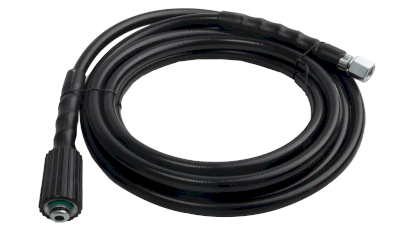What Is a High-Pressure Hose?

A high-pressure hose transports fluids like liquids and gases under high pressure. Made from flexible materials such as rubber or plastic, these hoses withstand pressures above 0.1 MPa.
Applications of High-Pressure Hoses
High-pressure hoses are indispensable in various sectors for tasks such as surface cleaning, machinery maintenance, construction, agriculture, automotive care, stone processing, and firefighting. Their ability to deliver powerful cleaning and maintenance capabilities makes them valuable in professional and domestic settings alike.
Principle of High-Pressure Hoses
Constructed with a multi-layered structure, high-pressure hoses feature an inner fluid transmission layer and a reinforcement layer made of steel wire or fiber to prevent bursting. This design ensures durability and resistance against the internal pressure exerted by the transported fluids.
Types of High-Pressure Hoses
- Wire-Braided Hose: Known for its steel wire reinforcement, this type offers high-pressure resistance, making it ideal for hydraulic systems and construction equipment.
- Spiral Hose: Features a spiral reinforcement pattern, providing durability and flexibility for agricultural and industrial use.
- PTFE Hose: Made from polytetrafluoroethylene, these hoses resist chemicals and high temperatures, suitable for pharmaceutical and chemical applications.
- Airless Paint Hose: Designed for paint and coating applications, ensuring uniform application through a specialized structure.
- High-Temperature Hose: Suitable for transferring steam and hot liquids in high-temperature environments, made from heat-resistant materials.
Other Information on High-Pressure Hoses
The material composition of high-pressure hoses, typically synthetic rubber or high-strength textiles, is crucial for their ability to handle internal pressures effectively. Selection depends on the specific application needs, including resistance to abrasion, chemicals, and temperature variations.